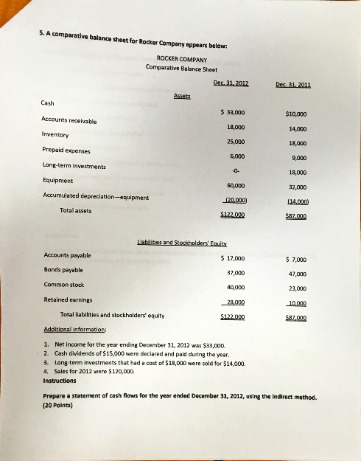All of the amounts on the balance sheets and the income statements will be expressed as a percentage of the base year amounts. The amounts from the most recent years will be divided by the base year amounts. For instance, if a most recent year amount was three times Horizontal And Vertical Analysis as large as the base year, the most recent year will be presented as 300. If the previous year’s amount was twice the amount of the base year, it will be presented as 200. Seeing the horizontal analysis of every item allows you to more easily see the trends.
The year of comparison for horizontal analysis is analysed for dollar and percent changes against the base year. When performing vertical analysis each of the primary statements that make up the financial statements is typically viewed exclusive of the other. This means it is atypical to compare line items on the income statement as a percentage of gross income. That being said, there are some times where cross comparing ratios of certain accounts would make sense, liabilities expressed as a percentage of net income for example. Also known as trend analysis, this method is used to analyze financial trends that occur across multiple accounting periods over time—usually by the quarter or year. It’s often used when analyzing the income statement, balance sheet, and cash flow statement.
Example of Vertical Analysis of a Balance Sheet
Google is in a good phase of business at the moment, and will likely continue to expand and announce new products and tech as they normally do. This causes difficulties since it’s hard to compare companies of different sizes. Datarails’ FP&A software replaces spreadsheets https://kelleysbookkeeping.com/types-of-accounts/ with real-time data and integrates fragmented workbooks and data sources into one centralized location. This allows users to work in the comfort of Microsoft Excel with the support of a much more sophisticated data management system at their disposal.
What is horizontal analysis and examples?
Horizontal analysis typically shows the changes from the base period in dollar and percentage. For example, a statement that says revenues have increased by 10% this past quarter is based on horizontal analysis.
The dollar change is found by taking the dollar amount in the base year and subtracting that from the year of analysis. Horizontal analysis is most useful when an entity has been established, has strong record-keeping capabilities, and has traceable bits of historical information that can be dug into for more information as needed. This type of analysis is more specific relevant for analyzing the value we maybe selling or acquiring. Harold Averkamp (CPA, MBA) has worked as a university accounting instructor, accountant, and consultant for more than 25 years. Dillon Jacobs is a passionate value investor who believes in the fundamental principles of Superinvestors like Warren Buffett, Charlie Munger, Ben Graham, Peter Lynch, and many more.
Content: Horizontal Vs Vertical Analysis
Horizontal analysis might be comparing the ratio of variable expenses over a period of three years. That means the variable expenses in the balance sheet of year 2 and 3 are shown as a percentage of variable expenses of year 1. Let us assume that variable expenses on year 1, 2, and 3 were $151, $147, and $142 respectively. Vertical Analysis refers to the analysis of the financial statement in which each item of the statement of a particular financial year is analysed, by comparing it with a common item. For example, if Mistborn Trading set total assets as the base amount and wanted to see what percentage of total assets were made up of cash in the current year, the following calculation would occur. Horizontal analysis, also called time series analysis, focuses on trends and changes in numbers over time.
ASSET OVERSTATEMENT FRAUD – COUNCIL OF ENGINEERS AND VALUERS
ASSET OVERSTATEMENT FRAUD.
Posted: Sat, 27 May 2023 06:06:26 GMT [source]
For example, a company’s management may establish that the robust growth of revenues or the decline of the cost of goods sold as the cause for rising earnings per share. By exploring coverage ratios, interest coverage ratio, and cash flow-to-debt ratio, horizontal analysis can establish whether sufficient liquidity can service a company. Horizontal analysis can also be used to compare growth rates and profitability over a specific period across firms in the same industry. This means Mistborn Trading saw an increase of $20,000 in revenue in the current year as compared to the prior year, which was a 20% increase.
Horizontal Analysis
On a balance sheet this might mean showing a percentage of either total assets, liabilities, or equity. The key difference between horizontal and vertical analysis depends on the way financial information in statements are extracted for decision making. Horizontal analysis compares financial information over time by adopting a line by line method. Vertical analysis is focused on conducting comparisons of ratios calculated using financial information. Both these methods are conducted using the same financial statements and both are equally important to make decisions that affect the company on an informed basis.

Horizontal and vertical analysis are two main types of analysis methods used for this purpose. Indeed, sometimes companies change the way they break down their business segments to make the horizontal analysis of growth and profitability trends more difficult to detect. To illustrate horizontal analysis, let’s assume that a base year is five years earlier.
Generally accepted accounting principles (GAAP) are based on the consistency and comparability of financial statements. Using consistent accounting principles like GAAP ensures consistency and the ability to accurately review a company’s financial statements over time. Comparability is the ability to review two or more different companies’ financials as a benchmarking exercise.

See how to do a horizontal analysis and a detailed horizontal analysis example. The two analysis are helpful in getting a clear picture of the financial health and performance of the company. Learn all about the 12 valuation ratios that allow investors to quickly estimate a business’s value relative to its … While Google does spend a lot more on R&D than Apple does, Google’s profit margins remain healthy and strong YoY. Its spending is increasing almost at the same pace as its earnings (when averaged).
